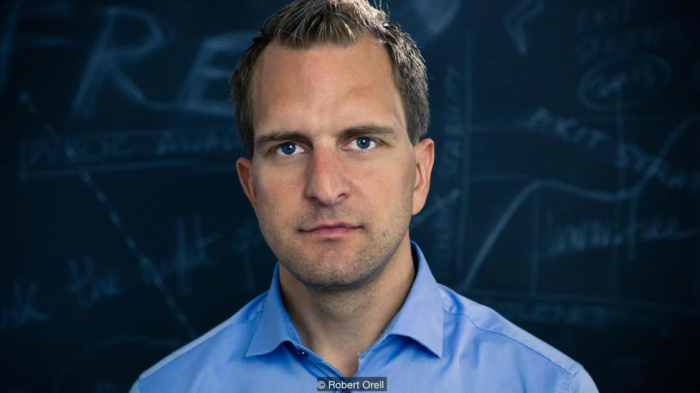Over the past few years there have been increasing fears about the growth of far-right, neo-Nazi and fascist organisations. Events such as those in Charlottesville in the United States 2017, in Chemnitz in Germany in 2018 and the recent terrorist attack in Christchurch, New Zealand, have led many to ask the question: what can we do to stop the spread of these extremist ideologies?
A small number of organisations are now gaining traction in this area. They are doing so by focusing in particular on the root social causes of why some people become attracted to extreme and violent right-wing organisations – and the ways you can guide them on a different path. Their insights are often counter-intuitive, but appear to closely match findings from other forms of extremism, including Islamist terrorism.
Some insights come from Exit Norway, a project established in 1997 by two researchers at the Norwegian Police Academy College. The project had three primary objectives: “To establish local networks to support the parents of children embedded in racist or violent groups; to enable young people to disengage from these groups; and to develop and disseminate methodological knowledge to professionals working with youths associated with violent groups”.
Exit provides a peer-to-peer approach designed to examine the social causes behind attraction to far-right organisations, and to use this to help people get out. The organisation has now spread across Europe.
Exit works exclusively with people who are already motivated to leave, with most clients of the organisation making first contact with Exit to begin the process. Fabian Wichmann, a case manager at Exit Germany, describes it like this: “The base of all our work is volunteerness. The people have to come to us, they have to call us or to write an e-mail or something like that, and we have to check how motivated the person is.
"It’s not enough for them to be looking for a way to cover up their past – they have to show remorse and dedication to changing their ways.”

Psychologists are working to understand the reasons that some people turn to extremist organisations like the Ku Klux Klan (Credit: Getty Images)
After initial interviews, Exit works with individuals to identify how they can help them leave the far right. They work through the array of barriers – social, psychological, emotional, and legal – for someone to get out of the particular organisation. Exit works in a confidential, non-judgemental, and non-confrontational manner to find solutions for people to these issues. The process is normally led by “formers” – previous members of far-right organisations – who can act as role models for new clients.
Toxic ideologies
It may seem surprising, but Exit does not begin the rehabilitation process by targeting the ideology. In his book Healing from Hate, Michael Kimmel studies, amongst others, two Exit organisations – Exit Sweden and Exit Germany. He argues that contrary to his initial presumptions ideology is not an important factor for many of the young people who join extremist far-right organisations. He struggled to get participants to be able to even explain the ideology of the organisations they were part of, with participants instead talking about the importance of being “part of something, part of a group”.
Kimmel acknowledges that there are critics of this approach, with many arguing that focusing on non-ideological reasons for people to get engaged lets people off the hook for past or even current extremist views and behaviour. But if our goal is to get people out of violent organisations, he argues, we must be practical in our approach, engaging with a member’s own experiences in order to further motivation to get them out.
Consider the experiences of Robert Örell. Today, he works for Exit Sweden and has spent the last years travelling through Europe and the world to promote the model and to help build similar organisations in different countries. It is a dramatic turnaround for someone who used to be a member of a far-right gang.
He says that this affiliation with the group grew from teenage delinquency and, as his self-esteem plummeted, he started getting into fights and conflicts with people around him. As he got into his later teen years, he joined a violent right-wing organisation. “I grew up in central Stockholm, which was quite middle class, fairly wealthy Swedes,” Örell explains. “We got into conflicts with suburban gangs which came in on Friday, and on Saturday evenings we’d go the youth club to fight.”

Robert Örell used to be a member of a far right group, but he now works for an organisation that aims to prevent others from following a similar path (Credit: Robert Örell)
Far-right organisations, Örell says, successfully exploited the feelings of isolation he was having as a teenager. He describes this as the "The Extremist Mindset", which includes three separate elements.
First, there is the promotion of black-and-white thinking. Örell argues that groups work to define an opposition between “us” and “them”, or “good” versus “bad”. In this case the “us” is white people and “them”, any people of colour, immigrants or Jewish people. This is linked with the second element, a feeling of superiority. Örell says that extremist groups frame themselves as being superior to other individuals or groups, primarily as a way for members to regain their self-esteem, as well as their sense of power, belonging and community. Finally, extremist groups engage in a process of dehumanisation. They give their opposing groups animalistic characteristics (like labelling immigrants as a “swarm of rats”). This reinforces the “us” vs “them” mentality, and also legitimises violent actions.
Örell argues that the main outcome of the extremist mindset is to create a strong sense of belonging: “In these groups you have a very strong sense of purpose and cause. I think this goes for a range of groups, whether it's white power groups or violent Islamic extremist groups, or gangs. What I see for a lot of people, essentially, is having been part of a group where you have this very strong commitment, you feel you have the brothers who are prepared to sacrifice their lives for you, you have a cause that's so important you are prepared to risk your life for it. These mechanisms are quite unusual and build together a very strong sense of 'us'.”
So what caused him to leave? He says he began to see hypocrisy in the group’s standards – which included a culture of drinking, partying and steroid use despite allegedly celebrating discipline. His feelings of distance increased when he joined the military, which helped to offer the discipline and sense of purpose without the toxic ideology. And the physical distance – of being away from his old acquaintances for longer periods of time – helped him to make the break.

Muslim leaders and allies across New York City marched in solidarity against the ideology of hatred shown in the recent New Zealand terror attacks (Credit: Getty Images)
“The military gave me a sense of competence and self-esteem that I missed earlier, which I see clearly decreased the need of feeling superior, of de-humanising others and the power and control that the involvement in the movement gave me,” he says today. “By cognitively and emotionally opening up I started to be less intolerant and had different experiences with the people I previously hated.”
Örell’s story matches academic research on why people leave far right organisations. In his book Racist and Right-Wing Violence in Scandinavia, Tore Bjørgo argues that there are a range of "push" and "pull" factors that can lead to people exiting extremist organisations. Push factors often include a loss of faith in the organisation’s ideology, disillusionment with the organisation’s strategy, leadership, membership or action or simply burnout, while pull factors can include intimate relationships, employment, or imprisonment.
The arc of engagement
Writing in the journal Behavioral Sciences of Terrorism and Political Aggression, John Horgan, Mary Beth Altier and colleagues have also come to similar conclusions. They argue that that there is a trajectory – or arc – that most people go through in their involvement in violent extremism. This arc comprises three phases – involvement, engagement, and disengagement. It is impossible to understand how to disengage people without first understanding the factors that led them to become involved and engaged in the first place.
Consider the story of "Sarah" (not her real name), a former member of a far-right organisation in the United States. Sarah explained to Horgan and his colleagues that her parents were extremely religious, yet at the same time had a very undisciplined lifestyle, with both being alcoholics. She had a turbulent relationship with her father, leading, at least in part, for her to be involved in a range of anti-social behaviours from a young age. As a teenager, she began to develop a sexual interest in other girls, leading to further distance from her family. Confusion, anger and prejudice was building up inside her. In high school Sarah encountered a group of skinheads, which she joined as a way to channel these feelings. Once she joined, she began to become more committed.
Sarah’s process of exiting was both physical and psychological. It started when she was imprisoned over a robbery, creating physical distance from her former friends. She then became psychologically disengaged when she became friends with Hispanic and African American women in jail, a process that led her to question her previous beliefs. Örell, referring to his own experiences, describes this as an “unexpected act of kindness”. These are acts of kindness from people who people previously saw as the enemy, acts which in turn can help people find motivation to rethink their beliefs and actions.
Whatever the initial trigger to leave, both physical and psychological distance is needed, the researchers argue, to remove the person not just from the ideology – but from all those other motivations for joining the group in the first place.
A similar trajectory can also be seen in members of other extremist groups, such as radical Islamists. In his book Jihad and Death, for example, Oliver Roy argues that modern jihadists, particularly those who have engaged in terror attacks in Europe, are initially less motivated by the ideology of radical Islam than by a sense of nihilism: a malaise formed from social isolation, fantasy and rebellion.

Extremists of all forms may share a similar psychological trajectory known as the "arc of engagement" (Credit: Getty Images)
Young European Muslims who are drawn to IS, he argues, are attracted to the organisation’s violent means more so than dreams of a caliphate. When dealing with recent terrorist attacks we are not therefore facing a radicalisation of Islam, but instead the Islamisation of radicalism.
While motivations for joining are different between jihadists and far-right extremists, Roy further highlights that ideology is often not the driving cause of extremism, but that it is often due instead to deep social causes such as social alienation and isolation.
A way out?
It is for all these reasons that organisations such as Exit prefer to examine the underlying motivations; it’s simply a more effective way to help people to leave than directly confronting the ideology, which can backfire. As Orell puts it: “We see that confronting, going into debate or arguments [about ideology] very seldom leads to change, rather the opposite – it strengthens the need to justify, explain and stand up for the ideas which leads to the opposite of what we want.”
Instead, they encourage clients to “think about and understand how they got involved in the movement, how this affected and influenced their way of thinking and reasoning, and how the movement helped them interpret everything they experienced through an ideological lens which by time became the only lens they used”. Secondly, they work with clients to build new experiences, primarily in the social sphere. “This helps us to create new perceptions of how to relate to the world, to different sources of information, to other people and to ourselves lived through experiences and interpretations of events. This way we create more nuances and less distance which makes the need for violent extremist ideas decrease and less attractive.”
Through engaging with groups such as Exit we can also learn other important things about the far right. In particular, both Wichmann and Örell warn us not to over-egg the rise of the violent far right in recent years. Despite recent high-profile events, they both argue that these groups are in fact not growing in membership. This does not mean that focusing on these groups is not important, but rather that we should be careful not to equate media coverage with membership growth.
As we grapple with the reality of extremist and violent right wing organisations, one thing we can learn is the necessity of actually trying to understand the motivations for joining. That is not to undermine the abhorrence of their beliefs, but to recognise the complex underlying factors behind their behaviours appears to be the best way to prevent more people following the same path.
Simon Copland is a PhD candidate in Sociology at the Australian National University. He is a freelance writer who has been published in the Guardian, SBS Online Australia, BBC Online.
Read the original article on BBC Future.
More about: extremism
















































